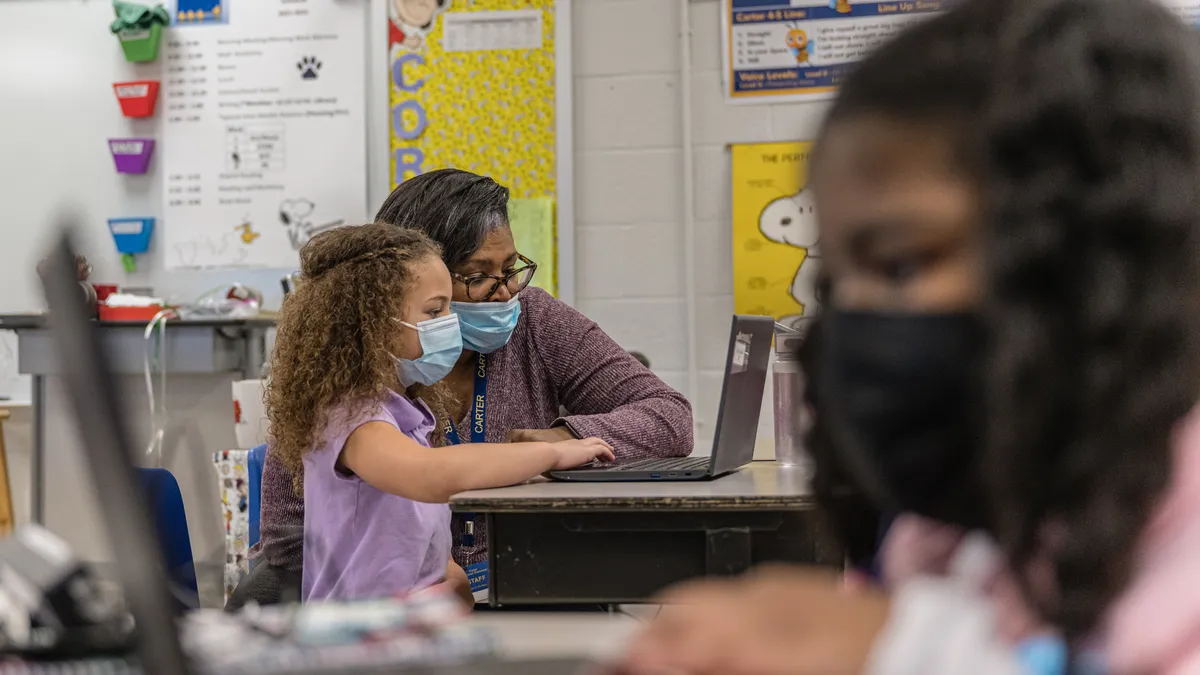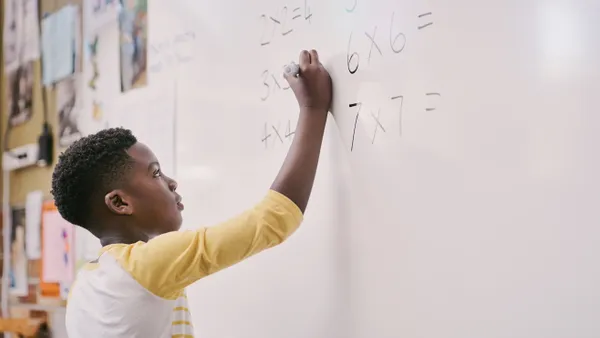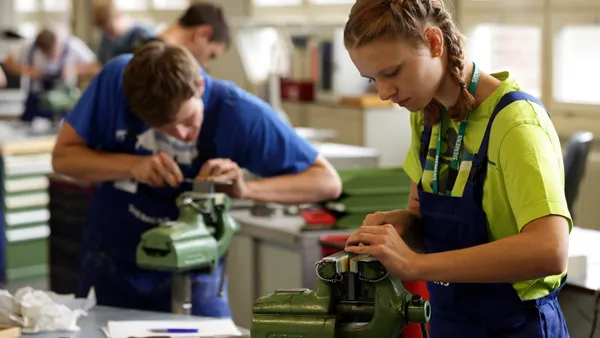Dive Brief:
-
Educators can introduce metacognitive skills in the classroom to encourage and support students who face difficulty knowing when to ask for help, can’t connect new learning to previous lessons, or don’t know how to critically assess their own work, special education teacher and tutor Nina Parrish writes for Edutopia.
-
Educators can focus on building up three metacognitive areas of focus: knowledge, experience and processes. For example, students can develop the ability to read and assess their own learning by using portfolios that measure their progress. Or they can hold conferences where they present their work to parents, highlighting their accomplishments and results.
-
Students can also improve the metacognitive processes that support planning, monitoring and evaluating their abilities through classroom tasks. This can be accomplished with tools such as assignment wrappers that ask students to gauge skills they still need to develop or having students set goals at the start of the school year so they can revisit and evaluate their progress at the close.
Dive Insight:
By teaching students how to advocate for themselves and their learning, educators seed classes with tools they can use to take ownership of their learning and succeed post-graduation.
These abilities, from treating peers with respect to asking for help, are also embedded within social-emotional learning skills. Armed with them, students learn how to speak up when they need support and develop the confidence to share and support their ideas and opinions.
“When students use their voice and agency, they are practicing essential social and emotional skills that they will use in their careers and throughout their lives,” said Justina Schlund, senior director of content and field learning for the Collaborative for Academic, Social, and Emotional Learning. “Student voice and agency can also help prepare students to engage civically and contribute positively to their communities.”
Educators can use curriculum to help these skills take root through multiple methods, including setting expectations to build trust within the classroom. Schlund suggests having students work together to develop shared agreements. She also likes sentence starters, which give students a template on how to talk about ideas respectfully.
She encourages teachers to ask open-ended questions, which can help students dive more deeply into topics, and also suggests setting aside more time for group work.
Schlund noted schools have pathways outside of the classroom that help students develop agency, too. These can include creating student leadership roles on school boards, allowing students to take part in district-wide decisions, and inviting them to lead conferences on issues they care about. These avenues can be adopted across all grades and offered to students not typically seen as leaders.
“Students who have not been traditionally considered ‘leaders’ are often more engaged and demonstrate strong leadership skills when given rich opportunities to express their voice and agency,” Schlund said. “There are also opportunities for student voice and agency at every age — not just high school! Even at a very young age, students can share their ideas, lead discussions, and give input into daily classroom life."






 Dive Awards
Dive Awards








